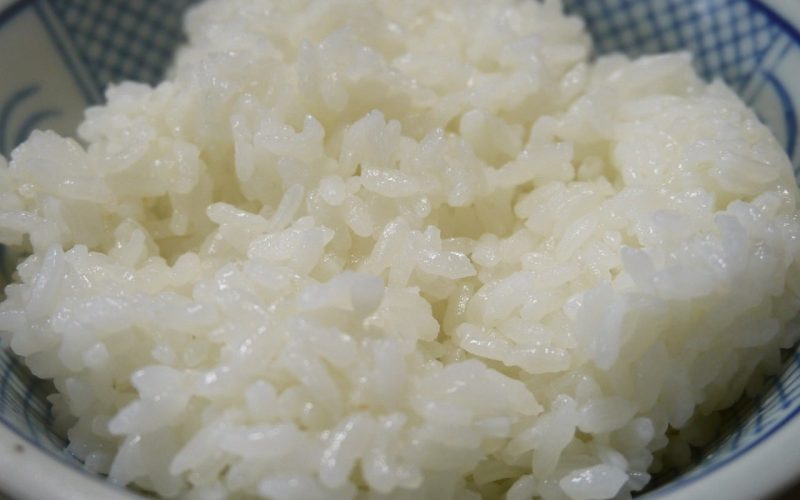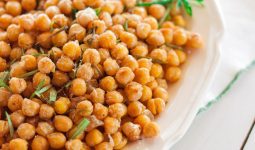To fully grasp how many calories are in rice, it’s crucial first to understand what calories are and why they matter.
What are Calories?
A calorie is a unit of energy. Regarding food, calories are used to measure the energy a food or drink provides.
Everything you consume, from carbohydrates and proteins to fats and sugars, contributes to your calorie intake.
So, when you’re wondering about your favorite rice dish’s calorie count, you’re asking about the energy you’ll gain from consuming it.
Why Counting Calories is Important
Counting calories is a popular strategy for maintaining or losing weight.
By knowing how many calories you’re consuming and how many you’re burning through physical activity, you can manage your energy balance.
If you consume more calories than you burn, you may gain weight. Conversely, you may lose weight if you burn more calories than you consume.
For instance, understanding how many calories are in common foods like rice, fried chicken, or an iced coffee can help you make informed choices about your diet.
This, in turn, can assist in achieving your health and weight management goals.
However, it’s important to note that not all calories are created equal. While knowing the calorie count is a good start, you should also consider the nutritional value of the foods you eat.
For a deep dive into the importance of counting calories and how to do it properly, check out our comprehensive guide on what is calorie counting.
Remember, understanding calories is just one aspect of a healthy diet.
Eating a balanced diet full of nutrient-dense foods is equally important to meet your body’s needs.
Keep reading to learn more about the calorie content of different types of rice and how to incorporate this staple food into a calorie-conscious diet.
Delving into Rice
As you embark on a journey to understand how many calories in rice, it’s essential first to understand why rice is a dietary staple in many cultures and its nutritional components.
Why Rice is a Staple in Many Diets
Rice is a versatile grain that forms the base of countless dishes across the globe.
It’s loved for its affordability, long shelf life, and easy preparation. It’s a primary source of energy for over half of the world’s population, particularly in Asia, and is cherished for its ability to adapt to different flavors and cuisines.
Rice is also gluten-free, making it an excellent choice for those with gluten intolerance or celiac disease.
Nutritional Components of Rice
Rice isn’t just about calories; it also brings a variety of nutrients to your plate.
It’s a significant source of carbohydrates, which provide the energy your body needs to function. Besides, it contains small amounts of protein and minimal fat.
Different types of rice also boast a range of micronutrients. For instance, brown rice retains the bran layer, which carries fiber, vitamins, and minerals.
On the other hand, white rice has lost this layer during processing but is often enriched with certain vitamins and minerals.
| Nutrient | Quantity per 100g of Cooked White Rice |
|---|---|
| Energy | 130 kcal |
| Protein | 2.7 g |
| Fat | 0.3 g |
| Carbohydrates | 28.2 g |
| Fiber | 0.4 g |
| Iron | 0.2 mg |
| Magnesium | 12 mg |
Remember, the calorie content can vary based on the type of rice and how it’s cooked. You can explore the calorie count of different types of rice in our next section.
If you’re also counting calories in other foods, check out our articles on how many calories in fried chicken or how many calories in pizza.
Counting Calories in Different Types of Rice
When you’re counting calories, knowing what’s in your bowl of rice can make a big difference.
Whether you’re a fan of white, brown, basmati, jasmine, or wild rice, we’ve got the scoop on how many calories each type contains.
White Rice
White rice, often the go-to for many dishes, contains about 130-200 calories per cooked cup (depending on the variety).
It’s usually lower in fiber and nutrients compared to its brown counterpart due to the milling process, which removes the bran and germ.
This process yields a softer, more tender grain – a characteristic beloved by many.
Read more about how many calories in white rice on our dedicated page.
| Rice Type | Calories per Cup |
|---|---|
| White Rice | 130-200 |
Brown Rice
If you’re looking for a healthier, fibrous alternative, brown rice is the way to go. A cooked cup of brown rice contains about 215 calories.
It’s a whole grain, which means that it retains all parts of the grain — including the fibrous bran, the nutritious germ, and the carb-rich endosperm.
| Rice Type | Calories per Cup |
|---|---|
| Brown Rice | 215 |
Basmati Rice
Known for its fragrant aroma, basmati rice is a staple in Indian cuisine. A cup of cooked basmati rice carries around 210 calories.
The long, slender grains have a slightly nutty flavor and a light, fluffy texture when cooked.
| Rice Type | Calories per Cup |
|---|---|
| Basmati Rice | 210 |
Jasmine Rice
Jasmine rice, a type of long-grain rice with a slightly sweet flavor, is a favorite in Asian cuisine. A cooked cup of this rice comes in at around 210 calories.
| Rice Type | Calories per Cup |
|---|---|
| Jasmine Rice | 210 |
Wild Rice
Contrary to its name, wild rice isn’t rice at all. It’s a type of grass native to North America.
It’s higher in protein than other types of rice and has a chewy texture and a nutty flavor. A cooked cup of wild rice contains about 165 calories.
| Rice Type | Calories per Cup |
|---|---|
| Wild Rice | 165 |
Remember, the calorie count in your bowl of rice can vary depending on factors such as the cooking method and any additives used.
You might also want to read about how many calories in half a cup of rice if you’re planning smaller portions. Happy calorie counting!
Factors Affecting Calorie Content
When considering how many calories in rice, it’s essential to recognize that the final number isn’t just about the rice itself.
Various factors can affect the total calorie content of your rice dish, including the cooking method, serving size, and additives and ingredients used.
Cooking Method
The way you prepare your rice can significantly impact its calorie content.
For instance, boiled rice will generally have fewer calories compared to fried rice due to the additional oil used in frying.
Similarly, steamed rice can have fewer calories than rice cooked in a broth, which may contain more fats and proteins.
If you’re interested in the calorie differences in cooking methods, check out our articles on how many calories in fried rice and how many calories in boiled rice.
Serving Size
The amount of rice you consume in one sitting also plays a role in the total calorie count.
A small serving size will naturally have fewer calories than a large serving.
A common serving size for rice is one cup, but you might be surprised at how many calories are in half a cup of rice.
Additives and Ingredients
Lastly, any additional ingredients or additives you mix with your rice can also affect its calorie content.
For instance, adding butter or cheese to your rice will increase the calorie content due to the added fats.
Similarly, mixing vegetables or lean proteins into your rice dish can alter total calories.
Remember, understanding the factors that influence the calorie content in your rice can help you make informed choices about your diet.
Whether you’re enjoying a bowl of jasmine rice, basmati rice, or brown rice, remember these factors to help you stay on track with your calorie goals.
For more helpful insights on calorie counting, don’t forget to check out our article on what is calorie counting.
How to Integrate Rice into a Calorie-conscious Diet
Knowing how many calories are in rice, you can integrate it into a calorie-conscious diet with a few simple strategies.
Let’s explore portion control, pairing with low-calorie foods, and choosing the right type of rice.
Portion Control
Portion control is a critical component when it comes to maintaining a balanced diet.
Remember, when it comes to rice, a single serving is typically 1/2 cup of cooked rice.
By sticking to this portion size, you can enjoy rice’s taste and nutritional benefits without going overboard on calories.
For example, a half-cup of cooked white rice contains approximately 103 calories, which can easily fit into a calorie-conscious diet.
For more details, check out our article on how many calories in half a cup of rice.
Pairing with Low-Calorie Foods
Another effective strategy is to pair rice with low-calorie foods like vegetables, lean proteins, and legumes.
This adds variety and flavor to your meals and provides additional nutrients without adding too many calories.
For instance, pairing rice with a serving of grilled chicken with approximately 100 calories can make for a satisfying and balanced meal.
Learn more about the caloric content of different foods in our articles, such as how many calories in grilled chicken.
Choosing the Right Type of Rice for your Diet
Lastly, the type of rice you choose can also impact your calorie intake.
Different types of rice, such as white, brown, and wild rice, have varying nutritional profiles and caloric contents.
For example, brown rice has slightly more calories than white rice, but it also provides more fiber, which can help you feel full longer.
On the other hand, wild rice has fewer calories and more protein than both white and brown rice.
You can make the most of your calorie intake by choosing the right type of rice for your diet.
Check out our articles on how many calories in white rice and how many calories in wild rice for more information.
Integrating rice into a calorie-conscious diet doesn’t have to be a challenge.
With some knowledge and simple strategies, you can enjoy this versatile staple while still keeping an eye on your calorie intake.








